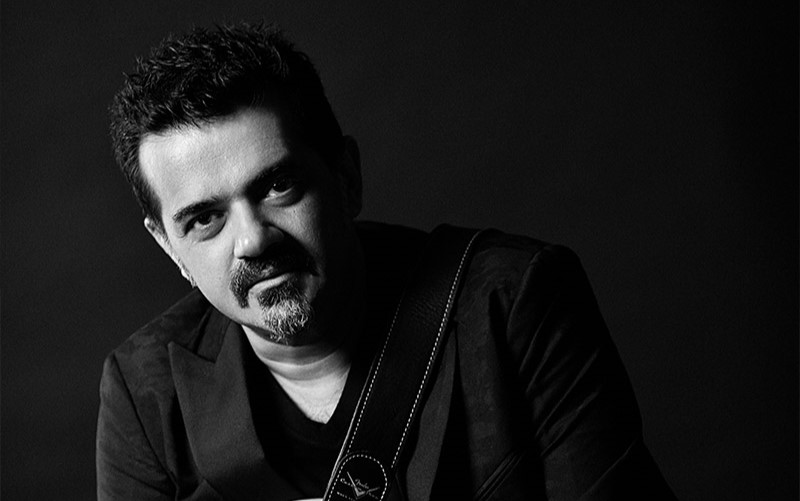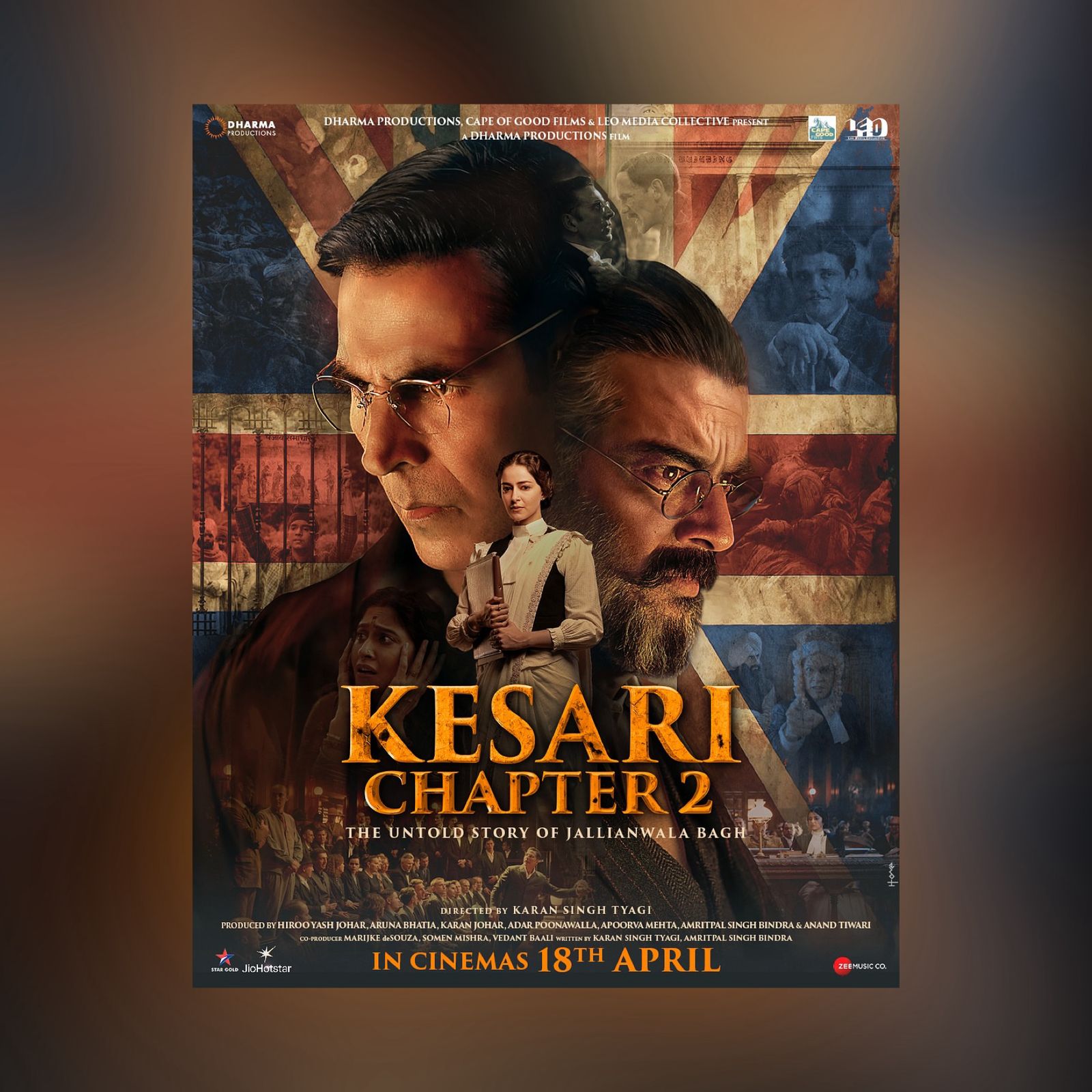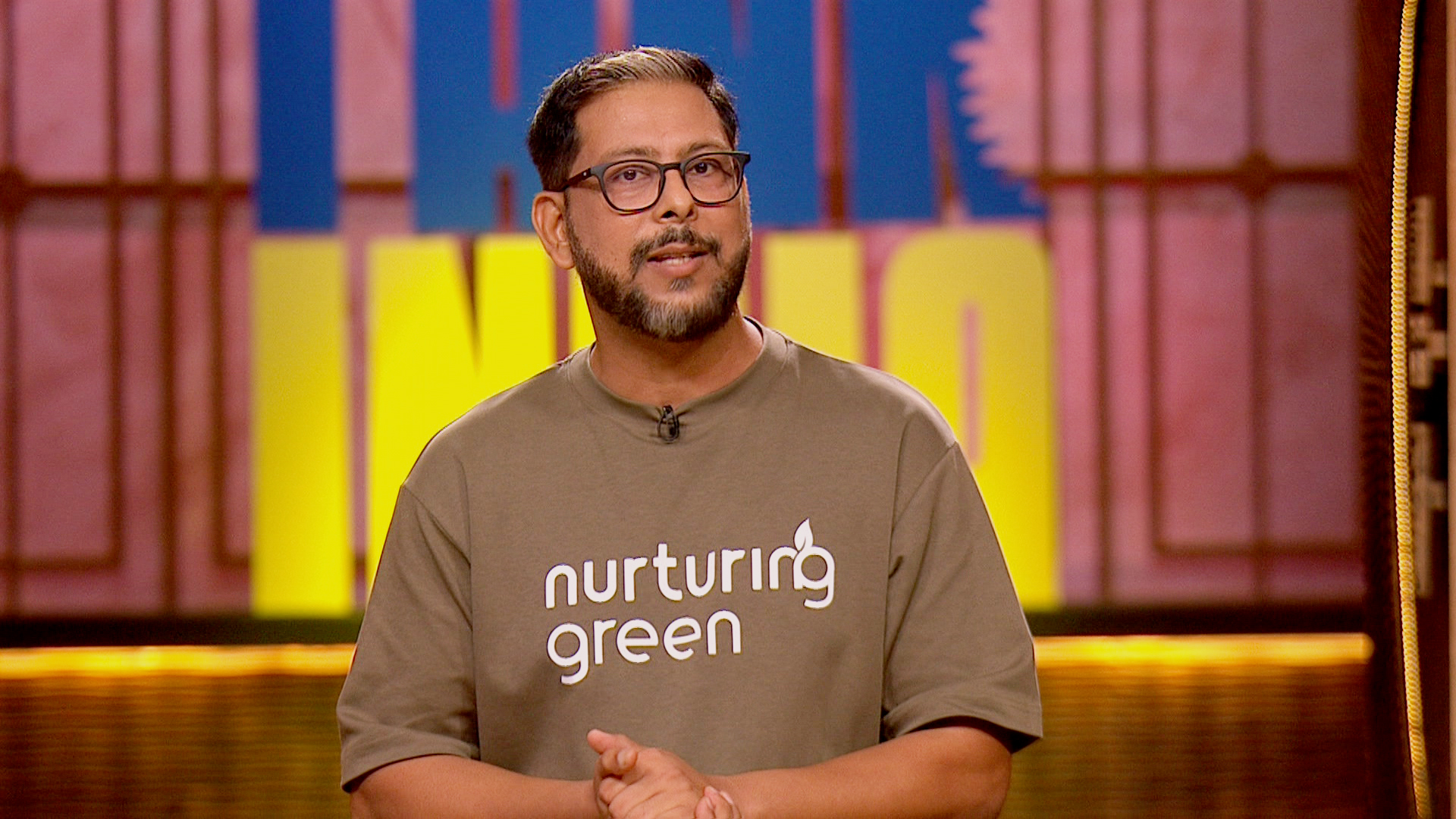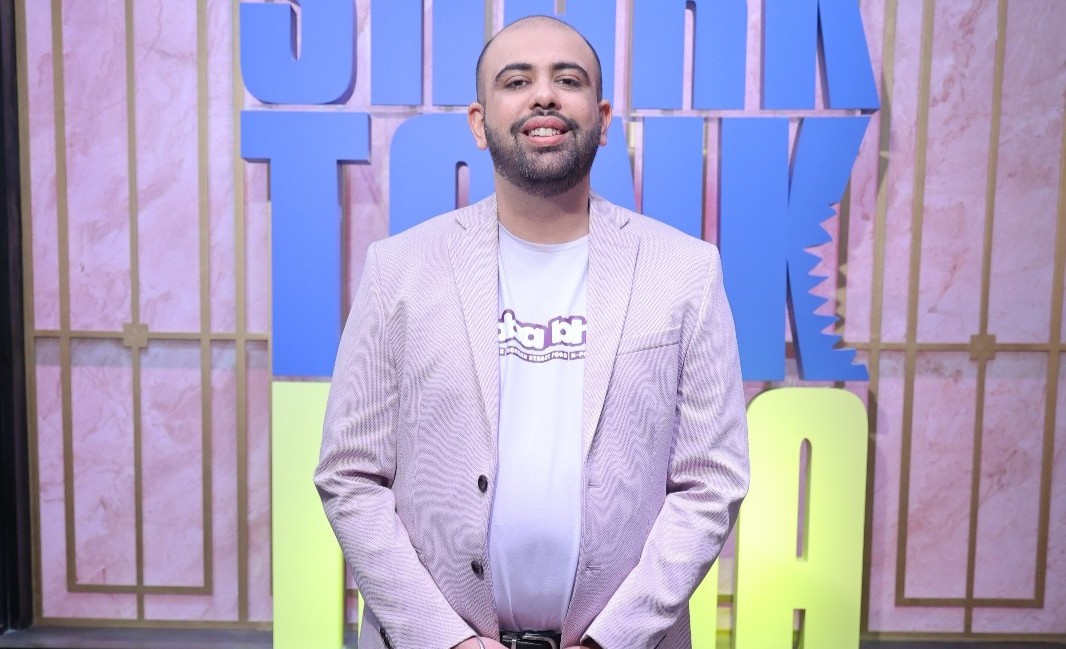
“It has been a fulfilling journey in music” – Ehsaan Noorani
In the year 1986, Ehsaan Noorani started working as a professional in the music industry. If we take that into account, he completes 38 years in the business this year. Ehsaan started out as a session guitarist and soon, he started composing jingles for advertising projects independently. In the year 1996, Ehsaan signed his first film ‘Dus’, as a part of the trio Shankar – Ehsaan – Loy. Though the film got shelved owing to the unfortunate demise of director Mukul Anand, the album was released in the year 1999. Over the years, one witnessed Ehsaan delivering several memorable songs with his professional partners Shankar Mahadevan and Loy Mendonsa for films like ‘Mission Kashmir’, ‘Dil Chahta Hai’, ‘Kal Ho Naa Ho’, ‘Bunty Aur Babli’, ‘Kabhi Alvidaa Naa Kehna’, ‘Zindagi Na Milegi Dobara’, ‘2 States’, ‘Dil Dhadakne Do’, ‘Raazi’ and ‘The Archies’. Apart from being one of the most respected composers in the film and music industry, Ehsaan has left an indelible mark as a guitarist as well.
In this elaborate interview, Ehsaan talks about his journey as a musician and composer, love for the guitar, stories behind some of the incredible songs created by Shankar – Ehsaan – Loy, what keeps the three of them together as a team, the dearth of good film music in today’s times, upcoming projects and more.
You were in the seventh grade when your friend Ravi Khote was in the school band. He played an important role in you getting into music.
Yes! The school band was a huge influence. You saw people playing on stage and that was quite an experience. You felt the urge to do the same thing. I remember going to the school social and seeing a lot of senior boys playing as a part of a band. I remained transfixed looking at those guys playing on the stage. Around this time, I picked up the guitar for the first time.
The legendary Bismarck Rodriguez was your first teacher in music.
Yes, he also taught Ravi Khote and several other people who made a name for themselves in music. I owe a lot to him.
After finishing school, you went to the Guitar Institute of Technology in Los Angeles, which is now called the Musician’s Institute.
It was a life-changing year for me. We were exposed to a lot of great music and got the opportunity to speak to several accomplished musicians from different parts of the world. At the institute, we learnt from top-notch professors. The course is a lot more structured now. Back then, it was a year-long course. Now, the course spans across two years.
While studying at the institute, you were encouraged to try out different styles on the guitar. Around that time, you used to observe Andy Summers’ style very closely.
I would attend all the classes. We got familiarized with several different styles including contemporary rock styles, blues style and fingerstyle. Though I could not play fingerstyle and classical, it was good to go to the class and see what it is all about. Apart from Andy Summers, I greatly studied the style and technique of Robben Ford, a blues guitar player and Larry Carlton, who mixed jazz and blues styles. Their styles were diametrically different from each other. Both of them were instrumental in shaping my guitar-playing and song writing style.
When you were in school, you used to listen to a lot of bands. Smoke On The Water by Deep Purple was the first song you learnt to play on the guitar.
Yes! There must be at least 10 million people who picked up the guitar after listening to ‘Smoke On The Water’. I used to love listening to Deep Purple’s music.
The first guitar you played on was the one which you found on the top of your uncle’s cupboard.
Yes, that’s right! There was a broken guitar on the top of my uncle’s cupboard. It was a Framus guitar. In hindsight, I should have kept it properly. In today’s times, that guitar would have had a lot of value. Back then, I got it fixed and started playing. A little later, a friend of mine gifted me an acoustic guitar. Initially, I struggled quite a bit with the instrument. I didn’t how to tune it. The fingers would get black and callous. In those days, getting good musical equipment in India was very difficult.
Now, everything is accessible.
Absolutely! Everything is available here in India. We had nothing at that time.
In India, most small towns still do not have shops selling musical instruments. Because of the internet, procuring musical instruments and equipment has become much easier. Learning music has also become possible for more number of people because of e-learning.
Yes, that is one of the reasons why you see so many young kids playing so well. I keep discovering so many wonderful guitarists on YouTube. There is a lot more exposure now. During the lockdown, I used to have these musical sessions on Instagram. I got to interact with many incredible musicians through these sessions.
Years back, you used to teach and do lessons for the online platform Torrins.com.
Torrins has been relaunched now. I am associated with the platforms and you will see some of my new lessons on it soon. It is a very good online platform. The people who teach there are master educators from India. Torrins and I run an online school together. Through it, we offer music courses to students in and above the fourth grade. The course has been designed by a bunch of American educators.
You finished your course at the institute and came back to India in 1986. The first jingle you composed was for a brand called Sona Spices.
Yes, that was the first jingle I had to my credit as a composer. However, the first jingle I worked on as a session guitarist was for Paragon Shoes.
You went on to compose jingles for several popular brands. Was it easy to get work in advertising?
Not at all! It was very tough. The choices were limited. Half of the advertisements would have English jingles and half of them would have jingles in Hindi. Veterans like Garry Lawyer, Ronnie Desai, Shiv Mathur and Vanraj Bhatia would do the English jingles. The Hindi jingle space was driven by composers like PP Vaidyanathan and Ashok Patki. Ashok was the one who called me to play for Hindi jingles first. I played the guitar on a couple of songs for Kalyanji – Anandi around that time. I remember ‘Hiro Hiralal’ was one of the films I worked on with them. I also did a song with Laxmikant – Pyarelal. They kept calling me after that but I couldn’t do more work in films as I got very busy with advertising work. I had started working extensively with Louis Banks. After a while, I started working as an independent composer in advertising.
Did you get associated with bands like Pegasus and Mickey’s New Home around this time?
Mickey’s New Home happened right after I came back from America. I met Ranjit (Barot). Ranjit’s sense of rhythm has always been fantastic and he had great sensibilities as a musician. He wanted to do music that would be a little more commercial but also intelligent with good songwriting. He was heavily into Stevie Wonder, George Benson and Level 42. American pop. The music we created was on those lines. We had recorded a few original tracks. Unfortunately, we lost them. Sanjay Divecha and Karl Peters, too, were a part of the band.
When you were a child, your mother would keep the radio switched on and that is how you ended up listening to quite a bit of Hindi film music back then. Some of the songs that struck a chord with you were ‘Kuch Dil Ne Kaha’ (‘Anupama’) and ‘Khilte Hain Gul Yahaan’ (‘Sharmilee’). After a while, you stopped listening to Bollywood music completely.
From the ‘80s, when I got into playing rock, I got completely out of the Hindi music space. When I was a child, we would see a Hindi film every Sunday. I saw a lot of Hindi films back then. My mother would putt on the radio all the time. However, the Hindi film music made in the ‘90s did not impress me at all. Then, I heard (A. R.) Rahman and I thought this was really interesting music. I heard his music when he was still called Dileep. When ‘Roja’ came out, I found it to be really good. R. D, Burman’s ‘1942: A Love Story’ got me interested in Bollywood music again. ‘Tu Mile Dil Khile’ was another song which I loved during that time. However, I still did not get back to listening to Bollywood music again regularly. If something catches my attention, I listen to it. I listen to a lot of artists like Santosh Narayan from the South.
How would you describe your relationship with the guitar? How did you get drawn to this instrument in the first place?
Finding that guitar on the top of my uncle’s cupboard was one thing. I used to listen to a lot of music which had guitar pieces in them. The Beatles and The Ventures were two of the bands I listen to a lot to. After I found it, I would play the strings up and down without knowing anything. Allan Sayani, who is the legendary radio presenter Ameen Sayani’s son, was my friend. He used to play the guitar. One day, I heard him play ‘Here Comes The Sun’ on his guitar. I really loved the way he played it and felt this was something I would like to play.
Out of all the jingles you have composed so far, which one is your favourite?
Once Shankar, Loy and I got together, we did a lot of work in advertising as well. The ‘Fair & Lovely’ theme you still hear was composed by us years ago. The Cadbury Perk jingle we did is one of my favourites. The famous ‘Oo La La’ jingle for McDowell’s was composed by Ravi (Khote) and me.
You had worked with Mukul Anand on advertising. He approached you to do a couple of songs for ‘Dus’. Why did you think about getting Shankar and Loy on board and creating music as a team?
Loy and I were doing a lot of work together. We were very good friends as well. Shankar had gotten into the business a few years ago. I thought his knowledge of Indian music would be a big asset. We started working on ‘Dus’ together. ‘Chandni Roop Ki’, the first song’, happened. We did the entire album, except for two songs (‘Mahiya’ and ‘Dus’) which were composed by Sandeep Chowta.
How was the experience of working with Mukul Anand on ‘Dus’?
Working with Mukul was fantastic! He was somebody who was always open to feedback and suggestions. If he didn’t understand something, he would ask questions. We would discuss and change things. The entire interaction would be amazing. We were in sync with his vision while working on ‘Dus’. He wanted a sound which would be of international quality. In his office, he had made a programming room for us to sit and compose. He and his partner Sunil Manchanda were extremely encouraging. When ‘Hindustani’ happened, he said the song would be played during cricket matches and all the big events. He also said that your music would play during the Ganesh processions and that’s what happened. He passed away during Ganesh Chaturthi. He had a clear vision for the film. After his demise, nobody knew how he had shot the film and how to complete it. Mukul was a genius. When one looked at the rushes, one felt confused but he knew exactly what he was doing and how things were supposed to move ahead. With today’s technology, he would be making some great movies.
It was supposed to be an anti-terror film.
Yes! They showed Salman Khan and Sanjay Dutt as two mercenaries as they could not show the army for some reason. It was about getting these two guys to fight a dreaded terrorist. Vinod Khanna played their superior in the film. The story ended on a peaceful note.
‘Dillagi’, directed by Sunny Deol, was one of the few films you did in the ‘90s. It was, perhaps, the first-ever multi-composer soundtrack for a Hindi film. The film had music by Jatin – Lalit, Shankar – Ehsaan – Loy, Anand – Milind and Sukhwinder Singh.
We did three songs for the film. Apart from the title track, we did ‘Kya Yeh Sach Hai’ and ‘Raahon Mein Chaayee’. They had already shot a part of ‘Raahon Mein Chhayee’. I remember the visuals for the antara portions were shot. We had to do some reverse engineering and create something which would be in sync with what was shot. For the title track, we recorded the voices of nine singers, Shankar, Sonu Nigam, Alka Yagnik, Abhijeet, Kavita Krishnamurthy, Shaan and Sukhwinder Singh.
A multi-composer soundtrack was an anomaly then. Now, every other film has a multi-composer soundtrack. You have never supportive of this trend. Shankar, Loy and you have left a few films like ‘Saaho’ when other composers were brought in. Multi-composer soundtracks lack cohesiveness and sound like compilation albums.
These days, you don’t even know what is a trend and what is not. A lot of remixes are happening. Till a few years back, filmmakers would give a lot of importance to the music in the film. That doesn’t seem to be the case anymore. In most films, you see songs being played for a minute or so. I am sure they have their reason. The entire concept of having songs in films has changed. I think ‘Rocky Aur Rani Kii Prem Kahaani’ was the last film which had big, lavishly picturized songs. Today, there are hit songs but where are the iconic songs? I remember one week after ‘Kajra Re’ came out, wedding bands were playing it on the streets. A song should have recall value.
You worked on ‘Bhopal Express’ around the same time.
We only did the background for the film. We did the opening theme. The film had two songs but we didn’t do those.
Wikipedia says Shankar, Loy and you worked on the different songs in ‘Mission Kashmir’ independently. Is that correct?
That’s not correct. We worked on the film as a team.
While Loy and you come from a western music background, Shankar has its roots in Indian classical music. Since you have spent so much time with each other, one would assume that your sensibilities would have rubbed off on each other. Do you listen to Indian classical music?
Unfortunately, I haven’t heard a lot of Indian classical music. Though I feel I should. Luckily, because of Shankar, I have got some exposure to it and understand some parts of it. I have a fair idea of how that kind of music can be applied in a composition. When we compose music together, sometimes the roles are reversed. Loy and I could come up with an Indian part for a song and Shankar could come up with a Blues guitar line. Sometimes, when somebody mentions a raga, I do some research on it.
There are a few things one tends to assume from the outside. Though the three of you work together, one feels Loy and you are more involved in projects which is driven by a westernised sound and Shankar takes centre stage in soundtracks which are heavy on Indian classical or semi-classical music.
Something like a ‘Samrat Prithviraj’ had equal contributions from all three of us. In ‘Katyar Kaljat Ghusli’, Shankar handled most of the things as it was a world which was completely alien to Loy and me. In the meetings, Loy and I could not even understand what they were talking about (laughs). In ‘Bandish Bandits’, Shankar did the Indian classical songs and Loy and I were heavily involved in the westernised songs. However, these are standalone projects. On most of the projects, the three of us are equally involved in everything. When we are doing a ‘Rock On!!’ or ‘The Archies’, it’s not that Shankar is not involved. We create the melodies together. Maybe Loy and I will be more involved in producing the songs as we play that kind of music.
Shankar – Ehsaan – Loy have been credited with putting together some of the most popular Hindi film soundtracks since the 2000s. However, there have been many underrated albums as well. Films like ‘Yeh Kya Ho Raha Hai?’, ‘Dil Jo Bhi Kahey…’, ‘Marigold’, ‘London Dreams’, ‘Chittagong’ and ‘Kill Dil’, among others, had some wonderful songs.
‘Dil Jo Bhi Kahey…’ had some incredible songs. ‘Kitni Narmi Se’, which Sonu (Nigam) sang, is a personal favourite. Hansal Mehta’s ‘Yeh Kya Ho Raha Hai’ was the first film we worked on after ‘Dil Chahta Hai’. It had some lovely songs as well. I strongly believe ‘Mirzya’ has been one of our best albums. ‘Uff Teri Ada’ from ‘Karthik Calling Karthik’ had become very popular but the rest of the songs deserved a lot of attention as well. ‘Dono’, which released last year, had some lovely songs.
Many a times, songs go unnoticed when the film does not do well. However, many songs also get their due in a few years. ‘Lakshya’ is played during the Beating Retreat. ‘Hindustani’ is played at the Wagah border every day. ‘Aye Watan’ (‘Raazi’) is played every Independence Day and Republic Day. Sometimes, songs do not show big numbers on YouTube but they touch a lot of hearts.
Shankar – Ehsaan – Loy have done a lot of interesting background scores as well. The background score of ‘Lakshya’ is one of my favourite scores by SEL. The guitar riff used in one of the scenes ended up becoming the title track of ‘Rock On!!’. Do you enjoy working on background scores?
Yes, I do. However, it can also get a little tiring at times. Making lots of edits or changes can be taxing. We have enjoyed doing the score for many films. We don’t do it for too many films now.
If one asks you to pick three of your favourite Shankar – Ehsaan – Loy songs, which ones would you name?
Dil Chahta Hai (‘Dil Chahta Hai’), Kal Ho Naa Ho (‘Kal Ho Naa Ho’) and Bol Naa Halke Halke (‘Jhoom Barabar Jhoom’).
Bol Naa Halke Halke happens to be in your favourite raga, Raga Bhimpalasi.
Yes, that’s right!
While guitar continues to be your primary instrument, you love synthezisers as well.
Synthesizers have always fascinated me. Growing up, I was listening to a lot of blues and classic rock. Later, I discovered many bands which were synth-oriented. Once I got back from America and started learning the ropes of music production, I really enjoyed experimenting with synthesizers. It is still one of my passions.
Composers who arrived in the late ‘90s and early 2000s redefined the Bollywood sound.
Our music proved to be a clutter-breaker in Bollywood. A lot of younger composers got encouraged because, all of a sudden, making music for Bollywood movies became cool. The movies also changed. That made a huge difference.
Shankar – Ehsaan – Loy have introduced many artists to the music industry. Arijit Singh is one of them. His first-ever film song ‘Aaja Nachle’ from the Hindi version of ‘High School Musical 2’ was for SEL.
I feel it’s an important thing to do. So many artists, who are extremely talented, do not get a break. As people working in this industry, we have some responsibility. ‘Ya Rabba’ from ‘Salaam – E – Ishq’ was originally recorded in Arijit’s voice. The production team did not like his voice. Now, the same people would chase him for a song. Kailash Kher, of course, did a brilliant job on the song. Arijit’s voice would have worked very well for the song too. On the same album, we introduced singers like Shilpa Rao and Nihira Joshi-Deshpande who sang ‘Saiyaan Re’ and ‘Mera Dil’.
Out of all the singers you have worked with, who are your favourites?
Shankar is absolutely brilliant! I don’t think we have somebody like him in the country. Mahalakshmi Iyer, whom we have worked with on many songs, is another favourite.
Which is that one thing that has kept you together?
You do go through conflicts when you are trying to create something. At the same time, you enjoy working together. There is a lot to learn from each other. You grow together. That’s really what makes things happen. The music has kept us together. That has kept us going.
Apart from music, food and travel are two things you are passionate about.
I am not really an ardent traveller. I get to travel because of work. The other day, I went to Gangtok for the first time and it was lovely. It is one of the perks of what I do. Food is not my passion. I am not into it the way Shankar and Loy are.
You do love the Keema Pav being served at the Olympia Coffee House in Colaba, Mumbai.
That I do (laughs). In the 1980s, we would go there once or twice a week to have dinner.
You have been a part of the blues band A Saturday Night.
I don’t do that anymore. I need to find time to do something out of films.
In the past, you had expressed your wish to come up with a solo album that would be a cross between funk, gospel and blues.
Yes, that’s something I had been wanting to do for a while.
You have often described yourself as a blues guitarist. However, you have played several other styles as well.
I had to do that for work. It’s not that difficult. It’s all music. For ‘Bhaag Milkha Bhaag’, we did a lot of heavy metal-based music. I have heard so much of that music.
Recreating old songs is another trend that has been plaguing the film and music industry. In the late ‘90s, you came up with the ‘Dance Masti’ albums which were very refreshing.
It was happening during ‘Dus’. When Mukul Anand came back after completing a schedule, we played him some of the songs from ‘Dance Masti’ and he really liked them.
Do you enjoy performing live?
Yes! That’s a lot of fun. That is the bigger part of creating music.
You have played for Vishal and Sheykhar and Gulraj Singh in the past. Have you worked with other composers as a guitarist?
I have played on a few songs by Gulraj Singh. He is an extremely talented composer. For Vishal and Sheykhar, I played on the song ‘Bahara’ from ‘I Hate Luv Storys’. I haven’t worked with other composers recently. These days, everybody have their own team.
One of your upcoming film projects is Aamir Khan’s ‘Sitaare Zameen Par’.
Yes! It was wonderful working with Aamir after a while. Amitabh Bhattacharya has written the lyrics. The music of the film has shaped up very well. As and when ‘Don 3’ and ‘Jee Le Zara’ start, we will be working on them.
This year, you complete 38 years in music.
Yes, I started working in 1986. It has been a fulfilling journey in music. It has been a blessing. I cannot have one complaint about it.
What is the next step for you as a musician?
Right now, I don’t know. Life has become so unpredictable. We will keep working and keep creating music. Sometimes, it’s better to let things remain open.
Publisher: Source link


